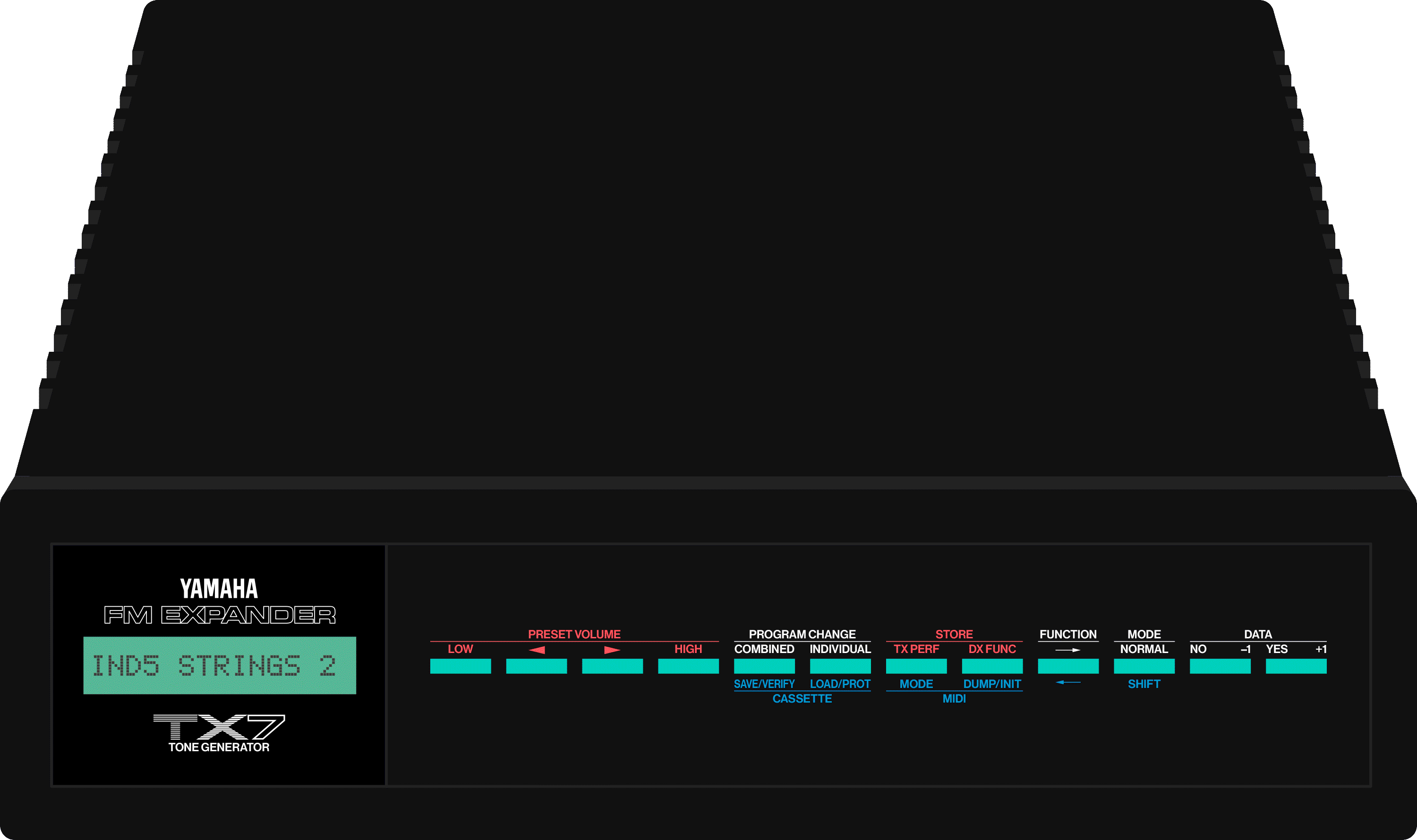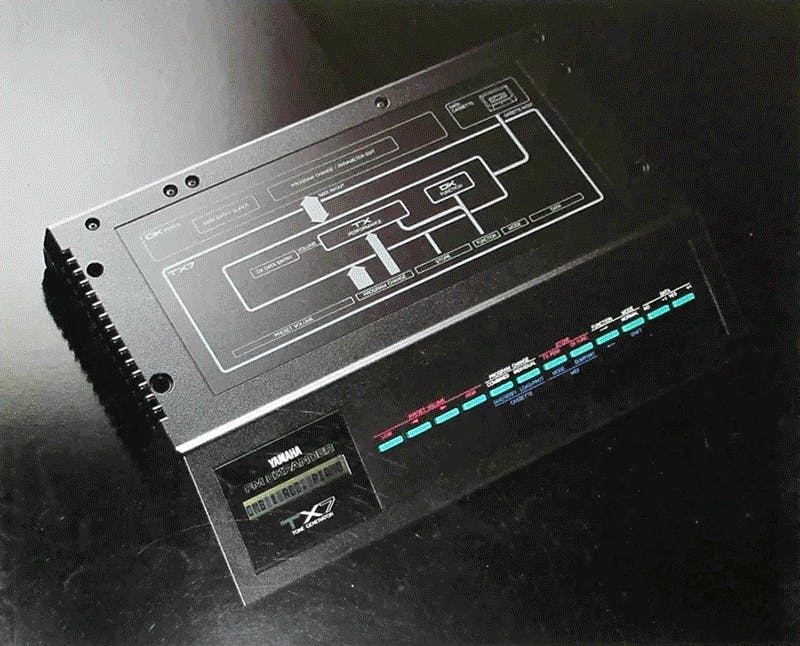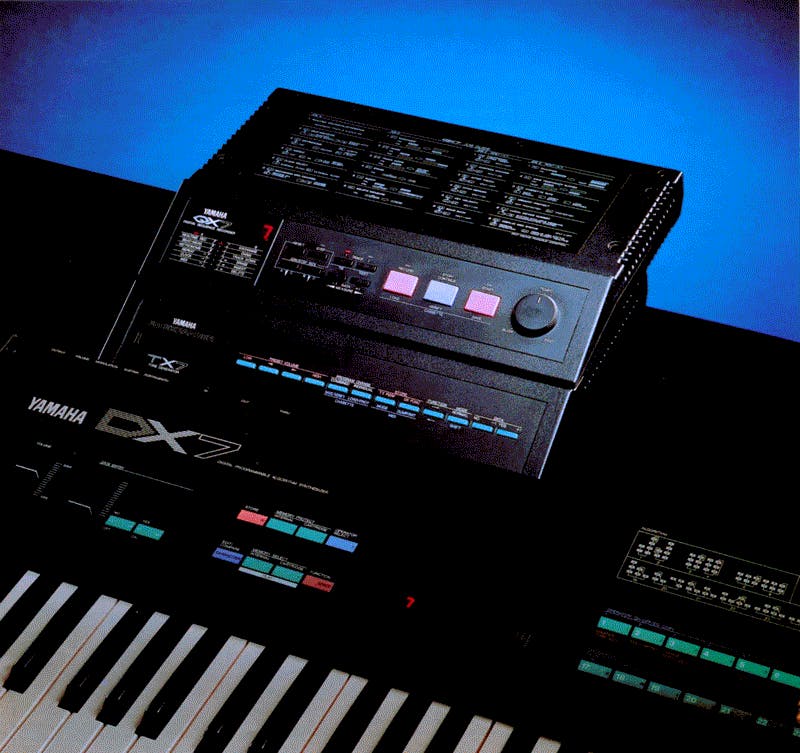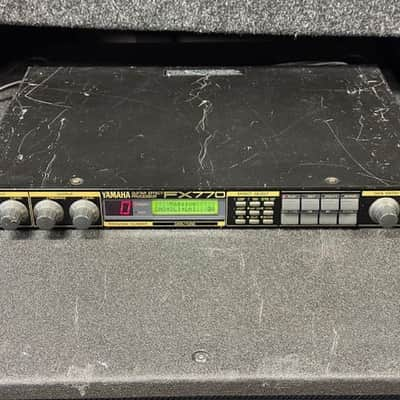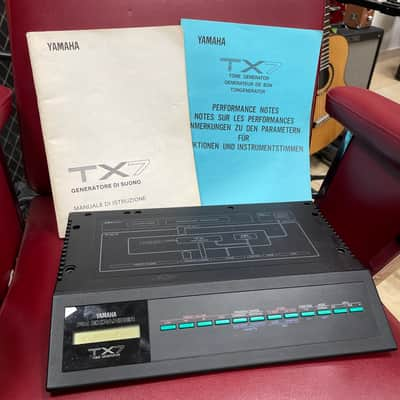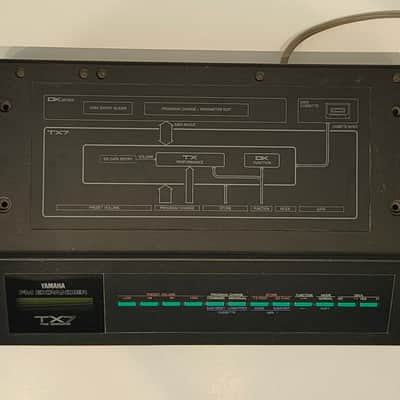1985 (Jan.)
Initially sold for ¥135,000
Essentially, the TX7 is a DX7 without the keyboard. A TX7 can turn a DX7 into a super dual tone generator FM keyboard and is also an ideal tone generator for use with digital MIDI sequencers.
A "keyboardless synthesizer" (or "sound module") was still a new concept for the early 1980s, consumer-oriented rack synthesizers started appearing around 1984 (Korg EX-800 being a notable example) and "programmers" to place on top of keyboards were quite common. So as the model "form" for a sound module was still not well defined, Yamaha went with an uncommon stackable approach.
Ideally you would put the TX7 on a table next to the DX7, but good luck diving into the system settings with even less buttons than the DX7. Over the years, Yamaha released a couple of other units with the same form factor (QX5, QX7 and QX21) and some more devices with the same width that could be stacked on top (RX17, RX21, MCS2, QX5-fd). Three TX7 units can be stacked thanks to a Yamaha LG7 stand.
Features
- 6-operator digital FM tone generator.
- 32-voice internal RAM memory.
- 32 function memories corresponding to each voice.
- 32 function memories corresponding to 32 voices stored in the DX7 synthesizer used with TX7.
- Cassette interface for voice and function storage.
- 16-note polyphonic output.
- MIDI IN, OUT and THRU terminals.
